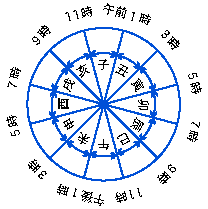The time system of Japan
The oldest record of “time” is the mention of a water clock in the Nihon-Shoki (the oldest chronicles of Japan). The time system during the age of the water clock is believed to be the same as that around the Nara period, in which one day and night is divided into 12 equal sections. The 12 signs of the zodiac were applied as names to the 12 sections of time. The time of the Rat was the two-hour period from 11 p.m. to 1 a.m. of the current time system, and the time of the Horse was from 11 a.m. to 1 p.m.
Japan currently uses time that divides day and night into 24 one-hour sections. This is called the fixed hour system. The method to determine time by separating day and night at dawn and dusk, and then separating day and night, which differ in length by season, into six equal parts is called the temporal hour system. Apart from the lives of the common people, the fixed hour system was used in part during the Nara and Heian periods (710-1185). However, the temporal hour system was used during Kamakura and Muromachi periods (1185-1573), and both the fixed hour system and temporal hour system were used during the Edo period (1603-1868). The use of the temporal hour system continued until the early Meiji period (1872).
On December 3, 1872 (January 1, 1873 by the solar calendar), Japan's calendar was changed from the lunisolar calendar to the solar calendar. As a part of this, the present-day time system using the fixed hour system was prescribed.
